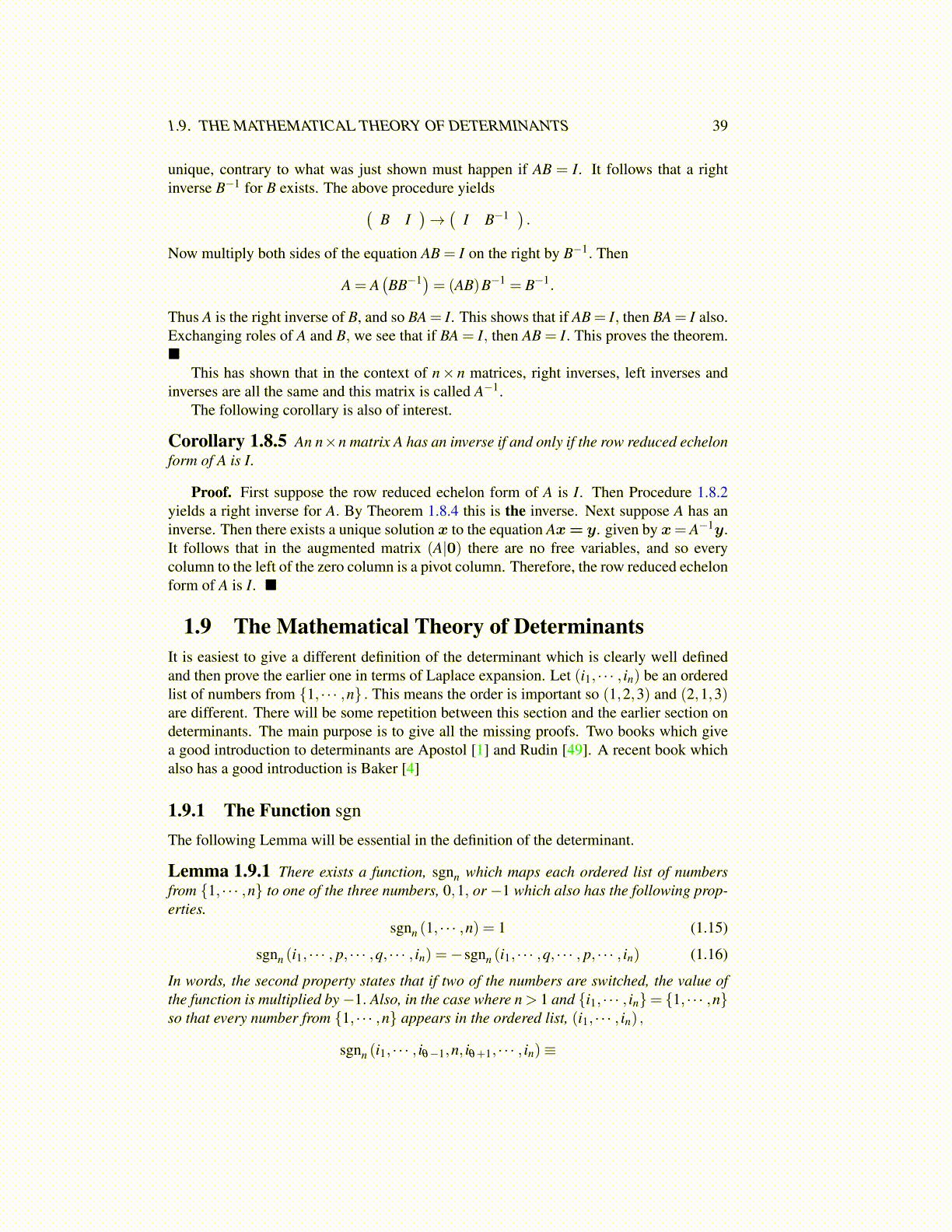
1.9. THE MATHEMATICAL THEORY OF DETERMINANTS 39
unique, contrary to what was just shown must happen if AB = I. It follows that a rightinverse B−1 for B exists. The above procedure yields(
B I)→(
I B−1).
Now multiply both sides of the equation AB = I on the right by B−1. Then
A = A(BB−1)= (AB)B−1 = B−1.
Thus A is the right inverse of B, and so BA = I. This shows that if AB = I, then BA = I also.Exchanging roles of A and B, we see that if BA = I, then AB = I. This proves the theorem.■
This has shown that in the context of n× n matrices, right inverses, left inverses andinverses are all the same and this matrix is called A−1.
The following corollary is also of interest.
Corollary 1.8.5 An n×n matrix A has an inverse if and only if the row reduced echelonform of A is I.
Proof. First suppose the row reduced echelon form of A is I. Then Procedure 1.8.2yields a right inverse for A. By Theorem 1.8.4 this is the inverse. Next suppose A has aninverse. Then there exists a unique solution x to the equation Ax= y. given by x= A−1y.It follows that in the augmented matrix (A|0) there are no free variables, and so everycolumn to the left of the zero column is a pivot column. Therefore, the row reduced echelonform of A is I. ■
1.9 The Mathematical Theory of DeterminantsIt is easiest to give a different definition of the determinant which is clearly well definedand then prove the earlier one in terms of Laplace expansion. Let (i1, · · · , in) be an orderedlist of numbers from {1, · · · ,n} . This means the order is important so (1,2,3) and (2,1,3)are different. There will be some repetition between this section and the earlier section ondeterminants. The main purpose is to give all the missing proofs. Two books which givea good introduction to determinants are Apostol [1] and Rudin [49]. A recent book whichalso has a good introduction is Baker [4]
1.9.1 The Function sgn
The following Lemma will be essential in the definition of the determinant.
Lemma 1.9.1 There exists a function, sgnn which maps each ordered list of numbersfrom {1, · · · ,n} to one of the three numbers, 0,1, or −1 which also has the following prop-erties.
sgnn (1, · · · ,n) = 1 (1.15)
sgnn (i1, · · · , p, · · · ,q, · · · , in) =−sgnn (i1, · · · ,q, · · · , p, · · · , in) (1.16)
In words, the second property states that if two of the numbers are switched, the value ofthe function is multiplied by−1. Also, in the case where n > 1 and {i1, · · · , in}= {1, · · · ,n}so that every number from {1, · · · ,n} appears in the ordered list, (i1, · · · , in) ,
sgnn (i1, · · · , iθ−1,n, iθ+1, · · · , in)≡